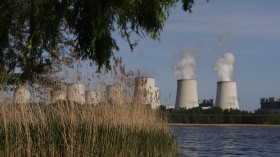An analysis of soil erosion and vegetation change in the ancient Cambodian city of Mahendraparvata reveals that there was about 400 years of intensive land use there beginning around the middle of the 9th century.
Mahendraparvata, in the nation's northern Phnom Kulen region, is an ancient city dating back to the Khmer Empire. Archaeologists have known the city's whereabouts for decades, but much of it has remained concealed by forest and earth until recently.
The city predates the iconic Angkor Wat temples by about 350 years.
The Phnom Kulen plateau, where what remains of the city is located, was the source of water for the ancient city of Angkor. An excavation of an ancient reservoir atop the plateau revealed evidence of intensive land use during the occupation and abandonment of Mahendraparvata.
Archaeologist Dan Penny from the University of Sydney led the study along with colleagues from other institutions.
"The results suggest that the valley was flooded in the mid to late 8th century, but the age of the reservoir remains inconclusive," the researchers wrote in a statement.
"The results from the soil and vegetation samples suggests that the reservoir operated for about 400 years and that settlements were intensive enough to trigger extensive soil erosion within the reservoir over a span of approximately 250 years beginning in the middle of the 9th century," the statement said.
By the end of the late 11th century, the archaeologists were able to pinpoint the last and largest episode of erosion, which resulted in a change in the reservoir's management and operation, the researchers said.
"The results also suggest a change in water management practices from the 12th century. This is the first indication that settlement in Mahendraparvata was not only extensive, but also intensive and enduring, with a marked environmental impact," the researchers wrote.
Penny and his colleagues' study is published in the journal PLOS One.
© 2024 NatureWorldNews.com All rights reserved. Do not reproduce without permission.





